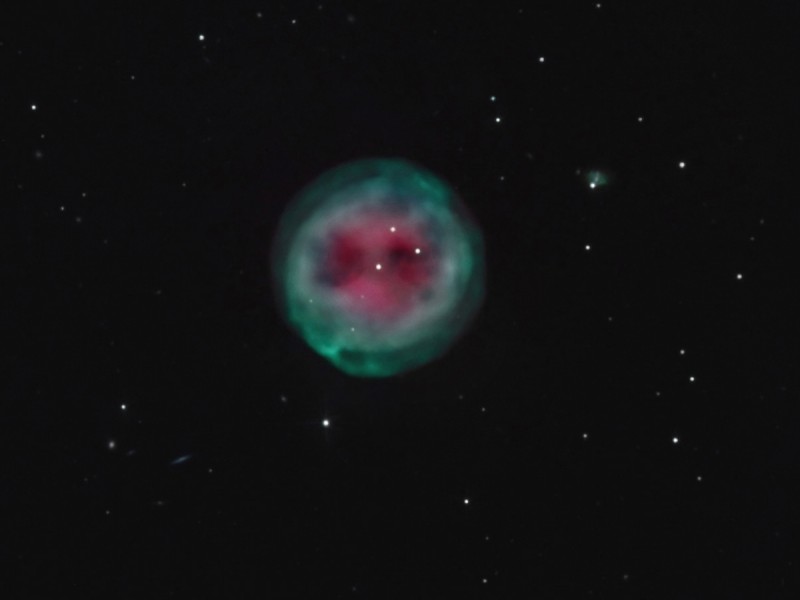
|
Credit & Copyright: Keith Quattrocchi
Explanation:
The Owl Nebula is perched in the sky about 2,600 light-years away
toward the bottom of the
Big Dipper's bowl.
Also
cataloged as M97,
the 97th object in Messier's well-known
list, its round shape along with the placement of
two large, dark "eyes" do suggest the face of a
staring owl.
One of the fainter objects in
Messier's catalog,
the Owl Nebula is a
planetary nebula,
the glowing gaseous
envelope shed by
a dying sun-like star as it runs out of
nuclear fuel.
In fact, the Owl Nebula offers an example of the fate of our
Sun as it runs out of fuel in another 5 billion years.
As we see it, the nebula spans over 2 light-years making it
roughly 2,000 times the size of Solar System.
Beautiful to look at,
this
color image shows impressive details within the cosmic owl.
The composite includes images made through
narrow-band filters for a total of 24 hours
of exposure time.
|
January February March April May June July August September October November December |
| ||||||||||||||||||||||||||||||||||||||||||||||||
NASA Web Site Statements, Warnings, and Disclaimers
NASA Official: Jay Norris. Specific rights apply.
A service of: LHEA at NASA / GSFC
& Michigan Tech. U.
Based on Astronomy Picture
Of the Day
Publications with keywords: planetary nebula - M 97
Publications with words: planetary nebula - M 97
See also:
- APOD: 2025 August 31 Á NGC 7027: The Pillow Planetary Nebula
- APOD: 2025 August 22 Á A Tale of Two Nebulae
- APOD: 2025 August 5 Á NGC 6072: A Complex Planetary Nebula from Webb
- APOD: 2025 July 29 Á A Helix Nebula Deep Field
- APOD: 2025 July 13 Á Planetary Nebula Mz3: The Ant Nebula
- APOD: 2025 June 9 Á Between Scylla and Charybdis: A Double Cosmic Discovery
- APOD: 2025 May 14 Á NGC 1360: The Robins Egg Nebula
